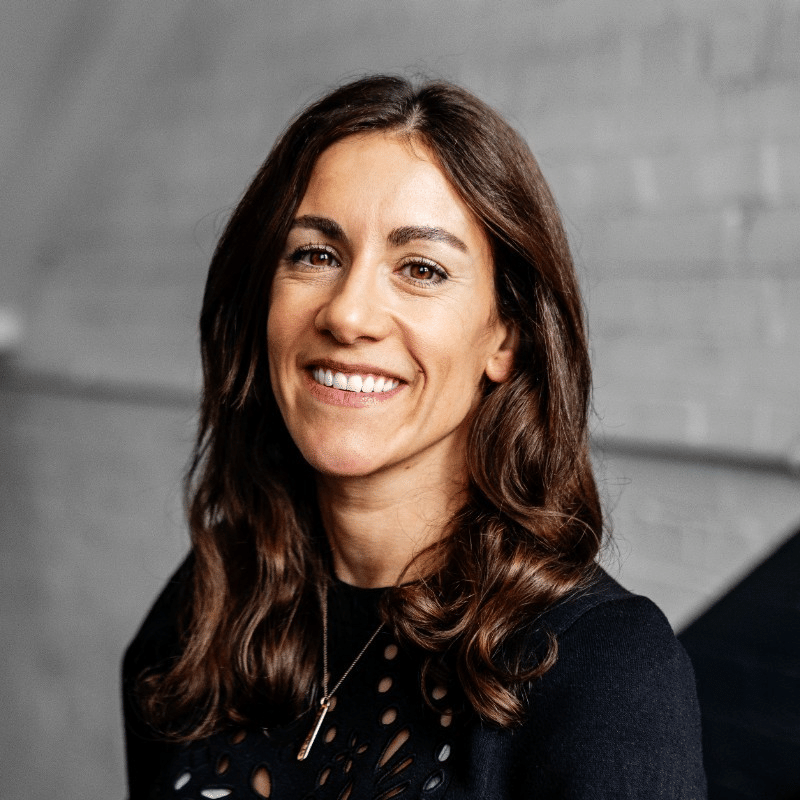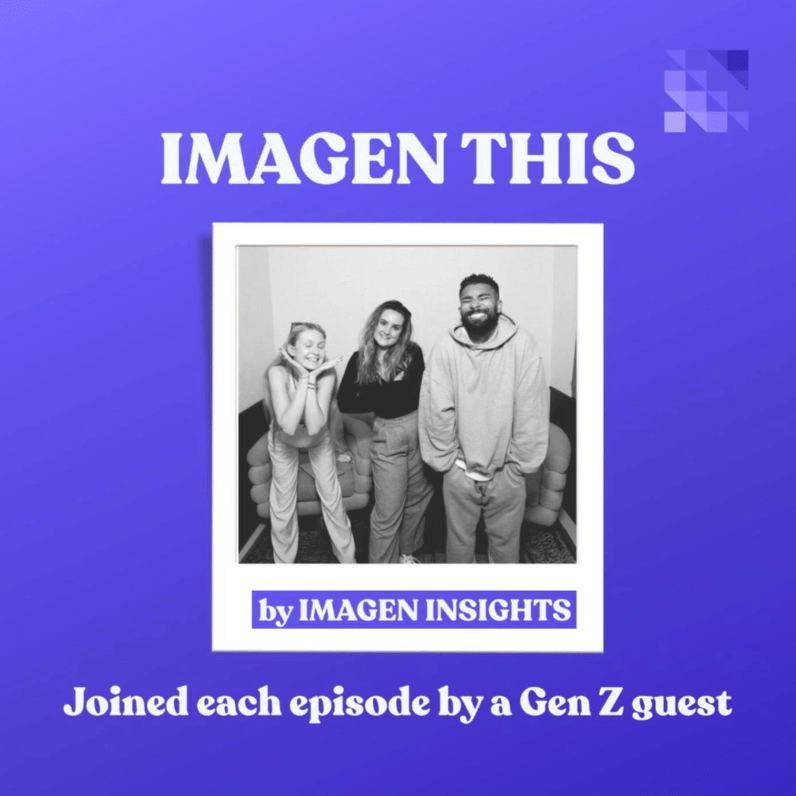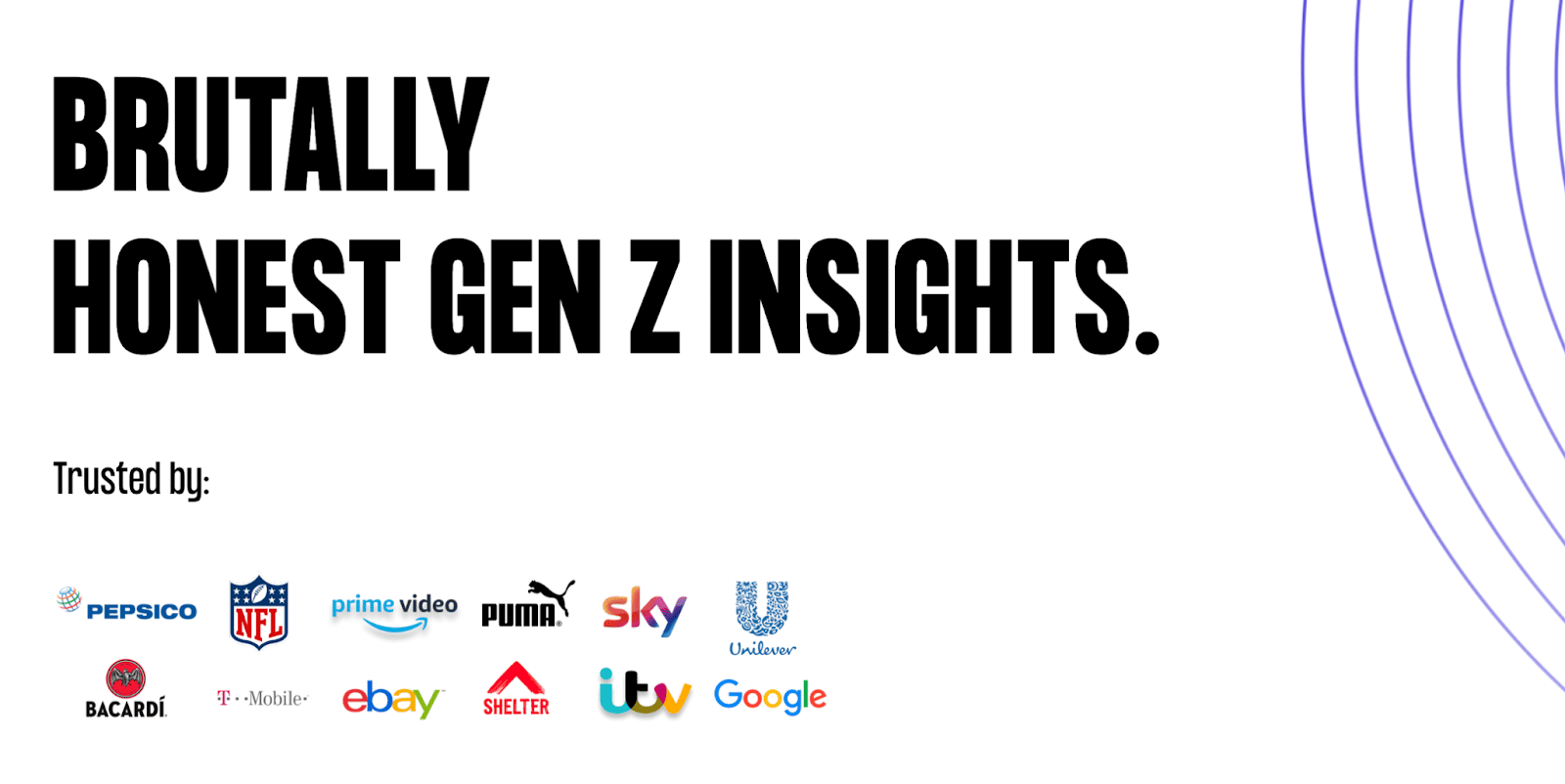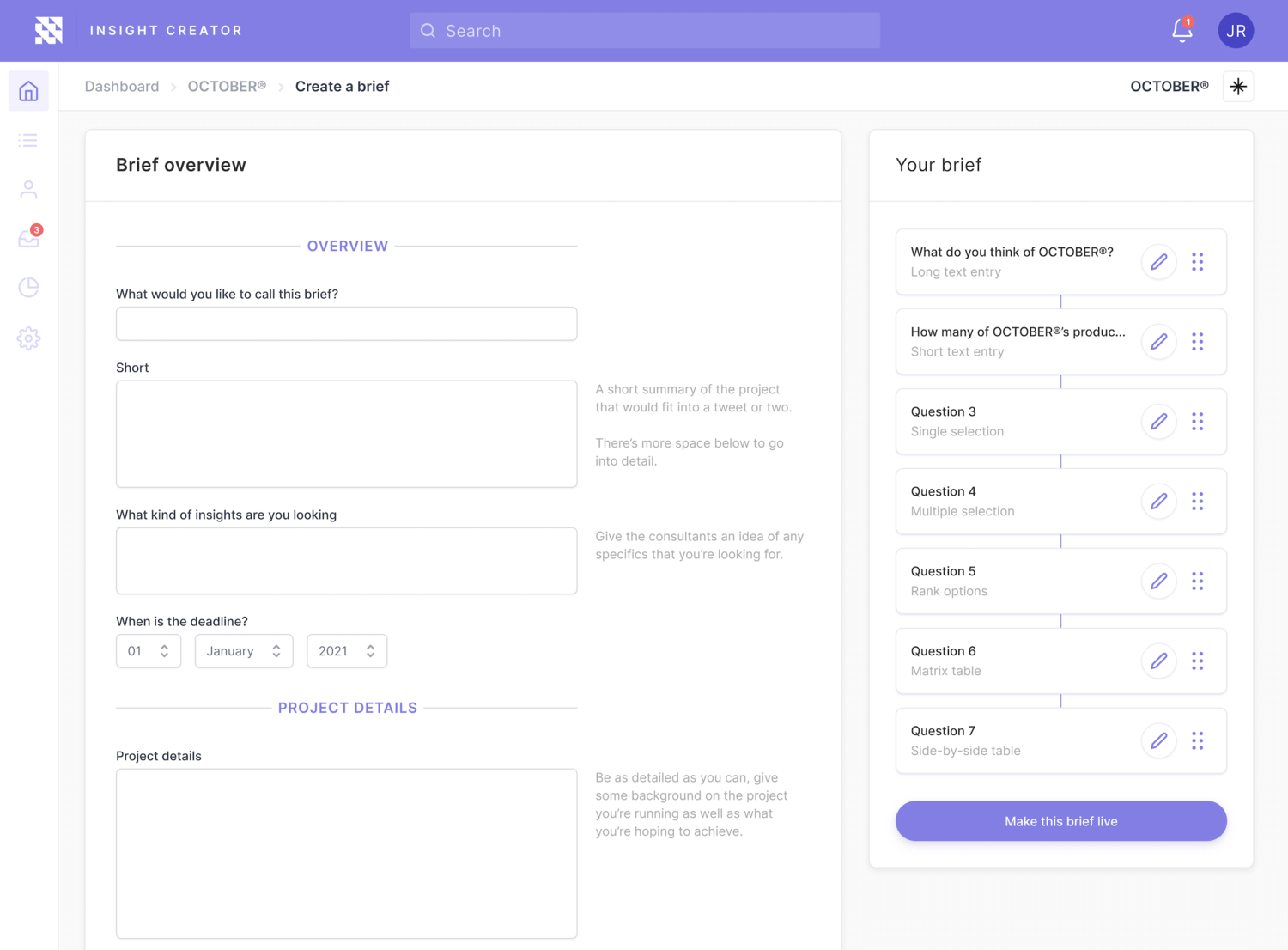
Imagen Insights’ Cat Agostinho and Jay Richards on building a community of 27,000 Gen Zers and getting noticed
By Jim James, Founder EASTWEST PR and Host of The UnNoticed Entrepreneur.
Cat Agostinho and Jay Richards built an amazing London-based qualitative research business targeting Gen Z. And they’ve got over 27,000 Gen Zers across 111 countries, helping big companies understand what Gen Z people are thinking about.
In the new episode of The UnNoticed Entrepreneur, the Co-Founders of Imagen Insights talked about what they do and how they built their business.
Image from LinkedIn
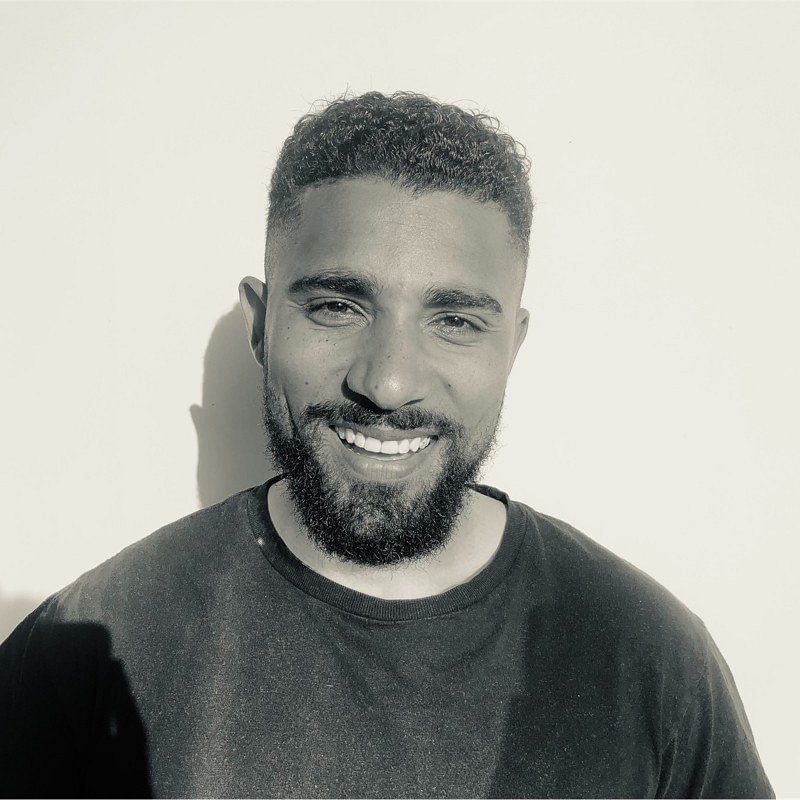
Image from LinkedIn
A Community of Gen Z People
In a nutshell, their mission is to help Gen Z shape their future. Realistically, the best way for them to do that is with brands — because brands are shaping countries and cultures.
Imagen Insights enable brands to crowdsource qualitative and quantitative insight from their community of 27,000 Gen Zers in 111 countries within 72 hours. Their community is rather diverse: 60% are female, 14% are Black, 15% are Asian, and 20% are members of the LGBTQ+ community.
From a quantitative perspective, this is nothing new. But from a qualitative perspective, if you want to do good qualitative research, you must do focus groups, which are both time-consuming and expensive. They at Imagen Insights have designed a platform where you can get that same depth of insight but at the scale of quantitative research.
The Value of Shared Values
Their business turned three in November and is now already profitable.
To be able to scale quickly, it was ultimately about having shared values when it came to what they wanted to do with the business. With Imagen Insights, they wanted to help young people in a way that would open doors for their future. This is the number-one reason they set up the business.
Without the young people in their community, they wouldn't have their business. They wouldn't be able to go to brands and talk to them about this amazing thing they can provide.
Image from Unsplash
Jay and Cat are extremely different people. They think differently. They have different outlooks and skill sets but share the same values. And that is important for the foundations of their business. Because they can come together despite having differentiation, they’ve been able to grow — and continue to grow — and build the community as well as the brands they work with.
Communicating with Brands and Prospective Clients
From a Co-Founder’s perspective, they have three different audiences: their customer brands, community, and own team.
Jay’s role is meeting brands virtually or physically, wherever they are in the world. A lot of that is all about enabling them because research isn’t just that attractive. It's normally the last thing that people consider. Brands typically think of influencer strategy, proper company promotion (PCP), and flipping media strategy first.
His first challenge was enabling people to understand that research was important, valuable, and needed. When communicating with prospects, he tells them how research is good for them and their business, how it will add value, and how it will make them more money in the long run.
The second challenge was for people to see that Imagen Insights existed because nobody knew they existed. Whether it was speaking engagements, sales prospecting, or LinkedIn marketing (e.g., messaging people and creating content), they wanted to get out there so people could say that their business is doing something and their founders are trying to build something.
The way they overcame these challenges was to be consistent with what they do.
Image from Freepik
Jay, for instance, has been posting on LinkedIn every single day for about three years. He’s constantly sending emails, once a month, to anybody he’s ever come into contact with. His goal there was not just to keep their business at the top of people’s minds but to add value.
Every single post and email he does isn’t salesy. He’s casual in introducing what they do and what’s happening in their business and the Gen Z space. If the audience finds it interesting or not, it’s fine. If they want to remove themselves from his email list, they can also do so.
Communicating with Gen Zers
From a community perspective, Cat shared that they speak to basically any organisation, whether it’s an educational body or youth organisation — anyone they can speak to that has young people.
They also provide workshops and webinars. They go to schools and do assemblies where they talk to young people about the opportunities that they offer and give them the choice to join their community if they want to.
A huge part of their community’s growth comes from referrals. They offer referral fees to young people if they introduce new people to the community. It’s why they hope that their community members always have a good experience because if not, then naturally, they wouldn’t be going to invite their friends, colleagues, family, and peers to join as well.
A lot of research companies will have a panel but Imagen Insights chose to call it a community instead. They always want to have a two-way dialogue.
In their community, they ask members what improvements they want to see in the platform, what they think the business should be doing better, and what type of resources they should be offering them.
Moreover, they invite them to their podcast, panels, and speaking engagements. There’s a lot more to joining their community than just getting paid to work on briefs (which, of course, remains the number one task).
Image from Listen Notes
Getting the Need for Research Noticed
Companies don’t really know that there’s a need for research. And for Imagen Insights, the main thing to do is to just get people into a room.
Whilst engaging with people, Jay realised early on that the reason people think research is important is because they actually don't understand the challenges they are facing as a business or a brand. A lot of time, they will be given an instruction: Achieve this revenue by next quarter. Get this number of views for this engagement. People have been tricked into thinking that it’s that metric or key performance indicator (KPI) that matters.
During his business meetings, he would ask these questions: What are you excited about over the next 12 months? What are the challenges that you are facing with what you're excited about?
He’d find that during the first question, people will be very excited, telling him about everything that's coming up. On the second one, they would go, Oh snap. They will realise that these are the challenges that they’re going to be facing.
At that point, all he does is show them that Imagen Insights are solving a pain point and offers the medication for it. The thing that they do well is that they don’t upsell anything. They simply point out the pain and offer a solution. In doing that, they help people realise the value of research.
Their clients include Amazon Prime Video, Google, and Unilever — and they come to them because they’re solving a pain point for them.
Screengrab from Imagen Insights
The whole premise of the work that their community does is to provide brutally honest feedback and unfiltered, unedited thoughts. So a brand has to be very open to the fact that they’re not going to get praise all the time. Things are going to be taken very fiercely by these young people, and they're going to be honest about it.
It’s not a case of just providing a bit of data. It's providing very rich qualitative information that then brands can take away and use to actively make changes to their product, design, and branding — whatever their business or marketing challenge might be.
This is why they encourage brands to make sure that they're actively taking that information and making changes for the better.
Disrupting the Idea of Research as Something Transactional
The idea of research has always been transactional. When they were starting the business, Jay and Cat came to a realisation that because of its transactional aspect, research has not been attractive to the people that have been engaging with the research.
When they started to build this community, the entire premise was, if they can make a living and breathing community — where members will get invited to events and they can meet up with each other, they can go on holidays together, and just go from online to offline — then there's an added element to it that isn't really out there.
This element is something they need to communicate effectively to their community and clients. Because clients will be there if they see that you add value — which is important in Imagen Insights’ case because they’re essentially a risk. They’re a startup and their clients are taking a risk on them.
Communicating with Their Team
In terms of internal communication, there’s a need to be really honest. They’re a business and a startup and, as Cat said, they’re still learning. Things are going to go wrong. There's going to be pressure. There are going to be money worries. There are going to be all these things that come with running a business, and so they have to be completely honest with each other (Cat often says that they’re like each other's therapists because they have to be open about every possible emotion).
Being transparent and honest with their team has worked for them. They are grounded in feedback — not just in the form of doing 360 feedback, which is important, but also in all of their meetings. They encourage feedback both ways because they are humans after all, and they are going to get things wrong. Jay and Cat are not Gen Z, so they need to rely on their younger team members to make sure that they’re upskilling them and that they are learning from them as well.
Communication and transparency about the good and the bad are utterly important for a healthy business.
Image from Unsplash
The interesting this about it is that Jay and Cat are like two sides of one brain. Jay is living in some other time zone as he’s always thinking of what they’d be doing in the next five years and so on. Cat, on the other hand, is very much about what’s happening this month — about how can they implement this or that right now and carry it out.
Combining these, they get to create a great vision. Jay would communicate to the team where they’ll going to be and Cat will tell them the practical steps on how to get there. And before they communicate that vision, they make sure that the two of them have spoken about it beforehand and decided on it together.
Jay is the one delivering those visions and Cat does the management part. However, they’re now trying to learn how to shift those roles slightly whilst not taking away from each other what they’re naturally good at.
Tools They Use
Internally, the tools they use are Trello and Slack. They use Slack for daily communication and Trello as an organisational and task-management tool. On Trello boards, you can add any task that you have throughout the day, month, week, or year. You can also do it for everybody on your team. On the platform, you can move stuff around and have reminders as well.
As for their community, they built their website app on Amazon Web Services (AWS).
When they first raised investment in 2018, one of their investors was a venture capital firm that had AWS credits (When you use their platform, Amazon gives credits that are usually worth $25,000 to $50,000 and last for over four years). With credits from their investor, they were able to build their platform for free.
Image from Imagen Insights
Key Takeaways
If there's a takeaway from their journey of building a fast-growing business and an interesting category globally from England, it would be to offer a service that people need and solves a challenge. Then, you have to really believe in that vision. Because if you do, then your passion will come out in your communication.
Every time Jay and Cat talk about their business, not only do they believe they are genuinely solving a challenge, but they also believe in what they are creating — and they are passionate about it. And if you have that, you will grow and grow and get noticed for sure.
This article is based on a transcript from my podcast The UnNoticed Entrepreneur, you can listen here.
Cover image by rawpixel.com on Freepik

